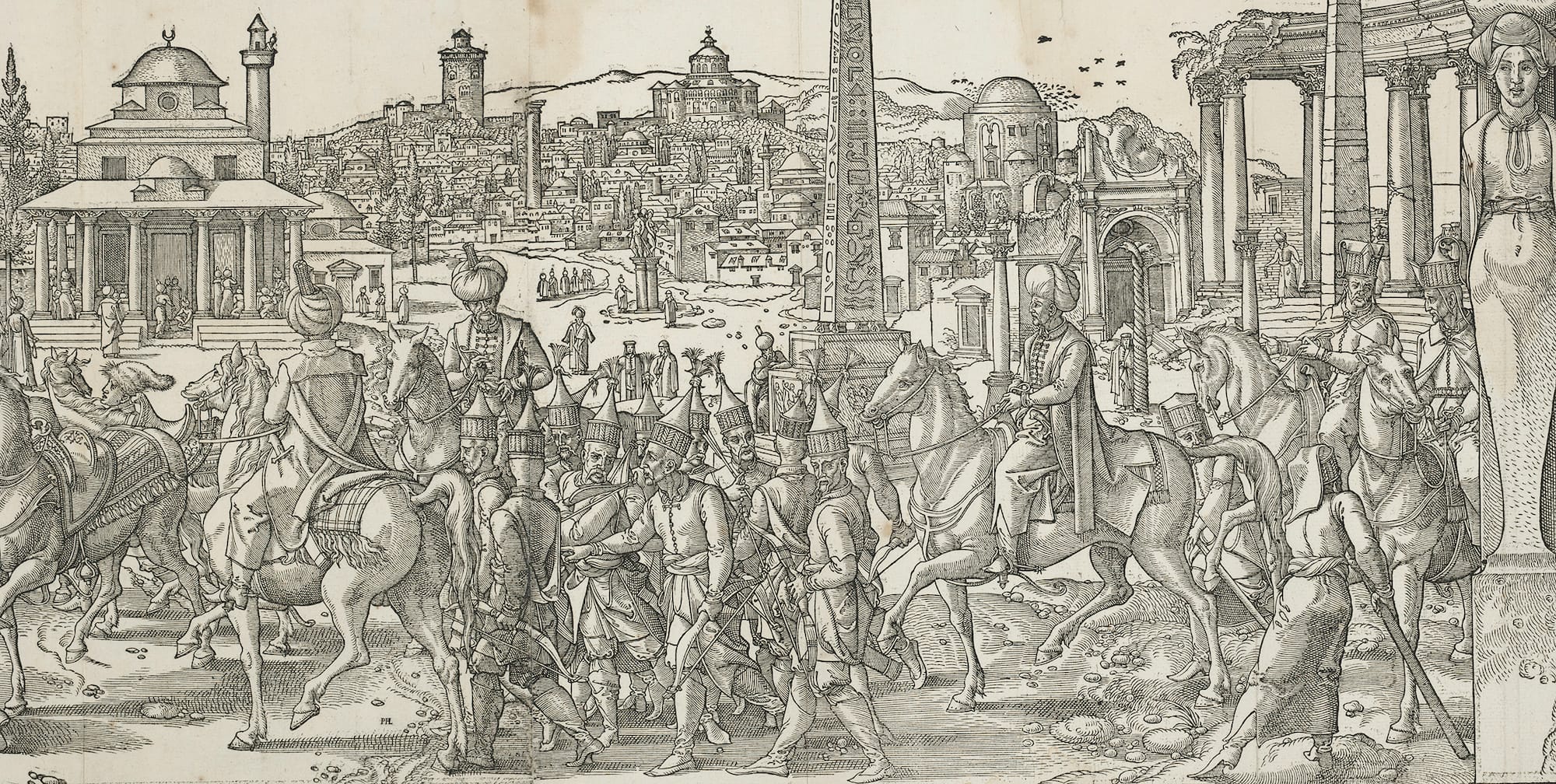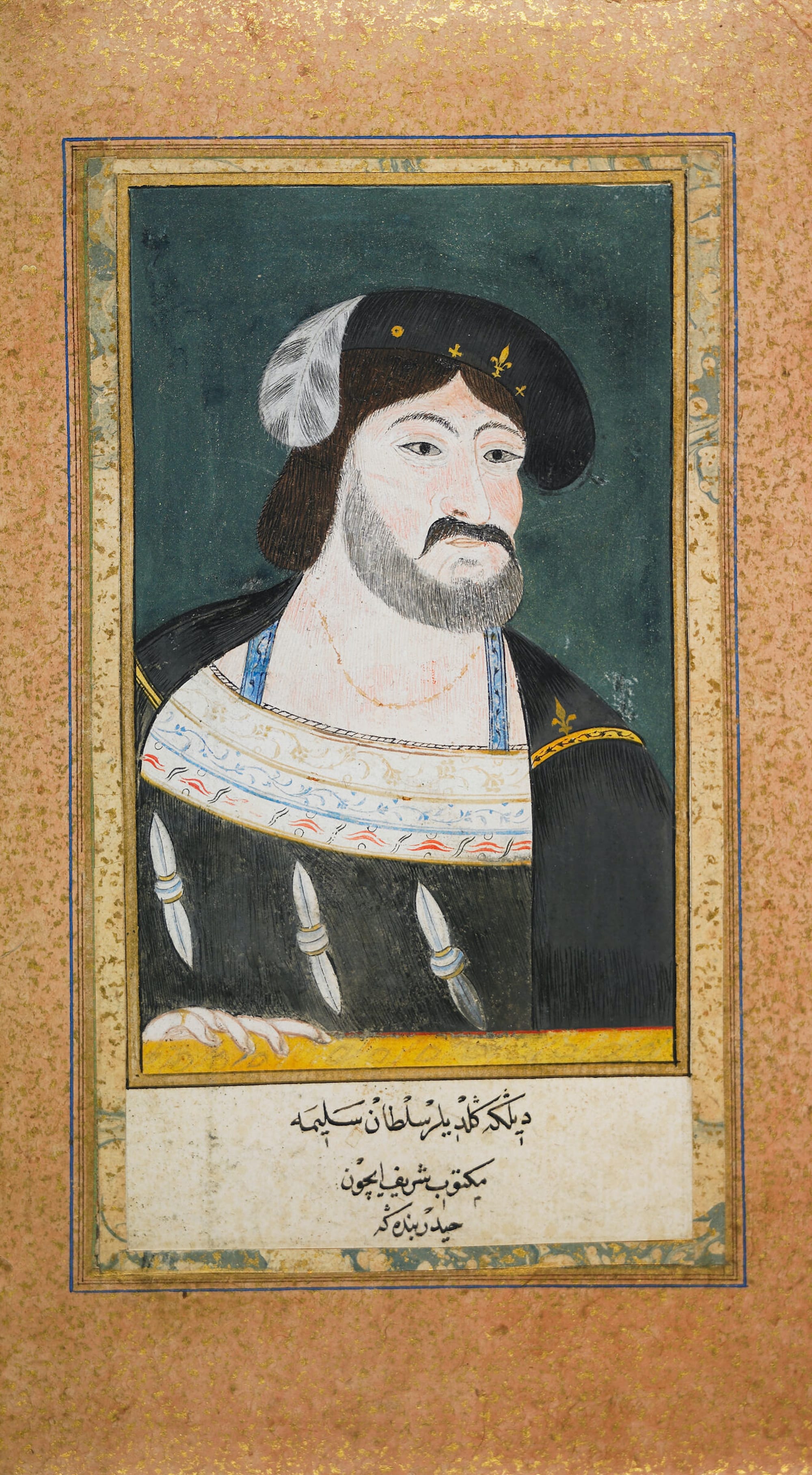The Mutual Fascinations of the Low Countries and Muslim-Majority Lands
Imagine Me and You encourages quiet contemplation of the juxtapositions and adaptations between the regions from 1450 to 1750.

CAMBRIDGE, Massachusetts — An exhibition at the Harvard Art Museums is an excursion from Europe to parts eastward, destination Istanbul, capital of the Ottoman Empire, with side trips to the Safavid (Iran) and Mughal (India) domains. Rather than an immersive experience, Imagine Me and You: Dutch and Flemish Encounters with the Islamic World, 1450–1750 encourages quiet contemplation of juxtapositions and adaptations, generalized tropes and nuanced interpretations.
This odyssey is made visual in the monumental, 16-foot woodcut “Customs and Fashions of the Turks” (1553) by Pieter Coecke van Aelst, an artist whose one-person show at the Metropolitan Museum of Art in 2014 caused a minor sensation with its grand tapestries and small-scale paper art. We follow Coecke from Antwerp to Istanbul in 1533 in richly detailed scenes, from treacherous mountains to the Roman, Egyptian, and Muslim monuments of the city where Sultan Süleyman, called “the Lawgiver” and “the Magnificent,” presides. Traversing Slavonia and Macedonia (present-day Croatia and northern Greece) to Istanbul, Coecke camps with soldiers in the mountains, picnics with other travelers, and watches funeral processions and circumcision ceremonies.

As customary for artists who made such a trip, Coecke belonged to a diplomatic mission to the Ottoman court led by the Habsburg ambassador Cornelis de Schepper, with the primary purpose of furthering trade. Meetings occurred between ambassadors and rulers, travelers and merchants, artists and their subjects. From material and visual records, we can speculate on the volume of transactions that took place. Luxury goods were bought and sold, among them textiles and tulip bulbs, both magnificently displayed here. A cushioned pillow and a prayer carpet are installed to indicate their original function. A carpet covering a Dutch table indicates its use in Amsterdam.

Visitors are invited to imagine the diminutive woman lucky enough to wear a sumptuous silk velvet robe with silver and gold-threaded floral designs. Never before exhibited, its metallic threads glow. Less inviting are the bridal shoes of wood, shell, leather, and glass with precariously high platforms; these kept feet dry on a wet floor in a bath and made the bride taller, but required two attendants to keep her upright.
Europeans recorded the visiting dignitaries from abroad, as in Aegidius Sadeler's engravings of the Safavid ambassadors to the Prague court, and Ottoman artists' portrayal of European rulers, usually based on intermediate portraits. The Turkish naval captain and poet Haydar Reis made watercolor portraits of rulers and famous men such as Italian physician and historian Paolo Giovio. In “Francis I, King of France” (1566–74), after a c. 1530 work by painter Jean Clouet, he translated the black beret and white plume of his source into a trim hat with floppy feather; he discarded Clouet's suspiciously smiling eyes, and mouth for a distant gaze and pursed lips beneath a crooked mustache and enlarged the neck to a massive size. While retaining the recognizable traits of his model, Reis transformed the textured volumes of Francis's clothing into forceful flat areas of color with delicate trim.

By the 16th century, the tulip, native to central Asia, was treasured by the Ottomans, who featured it in gardens and decorative patterns. Visiting Europeans brought bulbs to Vienna and botanist Carolus Clusius famously propagated the plant in Leiden in the Netherlands. Tulipmania ensued, and watercolors as records for owners and sellers became a specialty; 10 sheets show glorious purple-, red-, and yellow-streaked blooms. The Dutch cultivars were prized as diplomatic gifts: In 1612, for instance, "200 bulbs of the best tulips" were among the gifts from the first ambassador of the Dutch Republic, Cornelis Haga, to Sultan Ahmed I, according to the press materials. The trim, tight-pointed petals of Ottoman renditions bear little resemblance to the feathery hybridized Dutch tulips, but they were equally appreciated.
For the Europeans, the turban signified the Easterner, North African, pagan, and simply foreign. Accordingly, representations of the Adoration of the Magi, the Crucifixion, and other biblical scenes gave turbans to those from the Holy Land and afar. In ancient histories, opponents of the Romans wore turbans, as did Hannibal's army. As seen in Jacob Matham’s c. 1595 copy in this exhibition, Tintoretto gave turbans to the non-Christian onlookers in Provence, France, who witness St. Mark's rescue of the tortured Christian slave by his master. Accuracy was not a factor in their evocations of distance in time and place.
One caveat of this exhibition is that Dutch and Flemish artists outnumber their Islamic counterparts. But Imagine Me and You subtly points out kinships, mutual curiosities, and distinctions in the encounters between these two regions.

Imagine Me and You: Dutch and Flemish Encounters with the Islamic World, 1450–1750 continues at Harvard Art Museums through August 18. The exhibition was organized by Talitha Maria G. Schepers.





